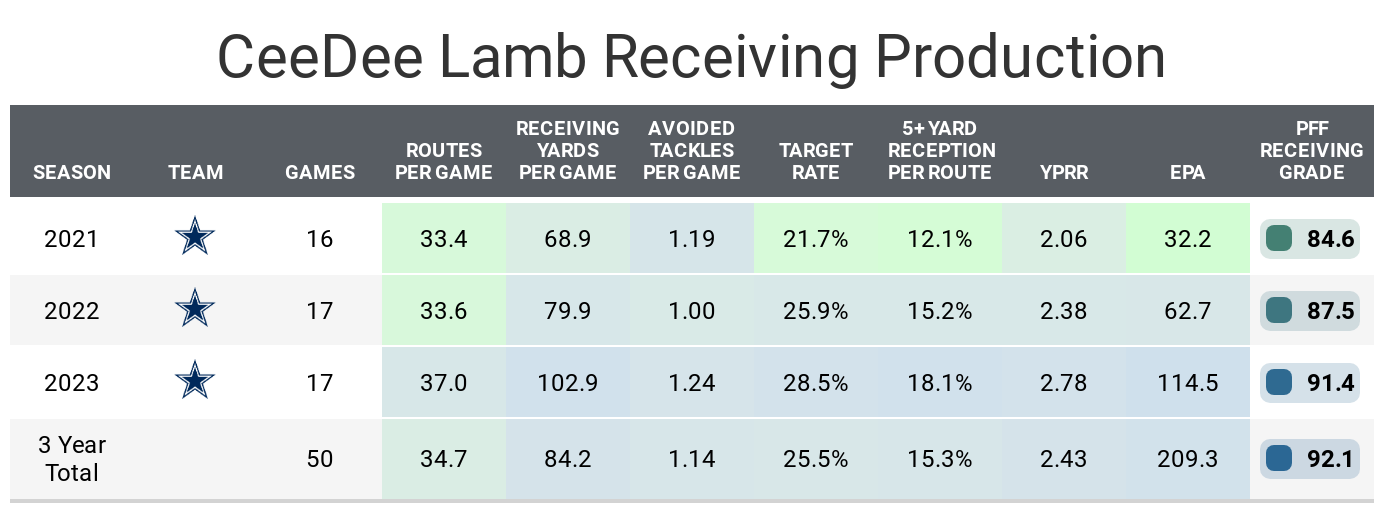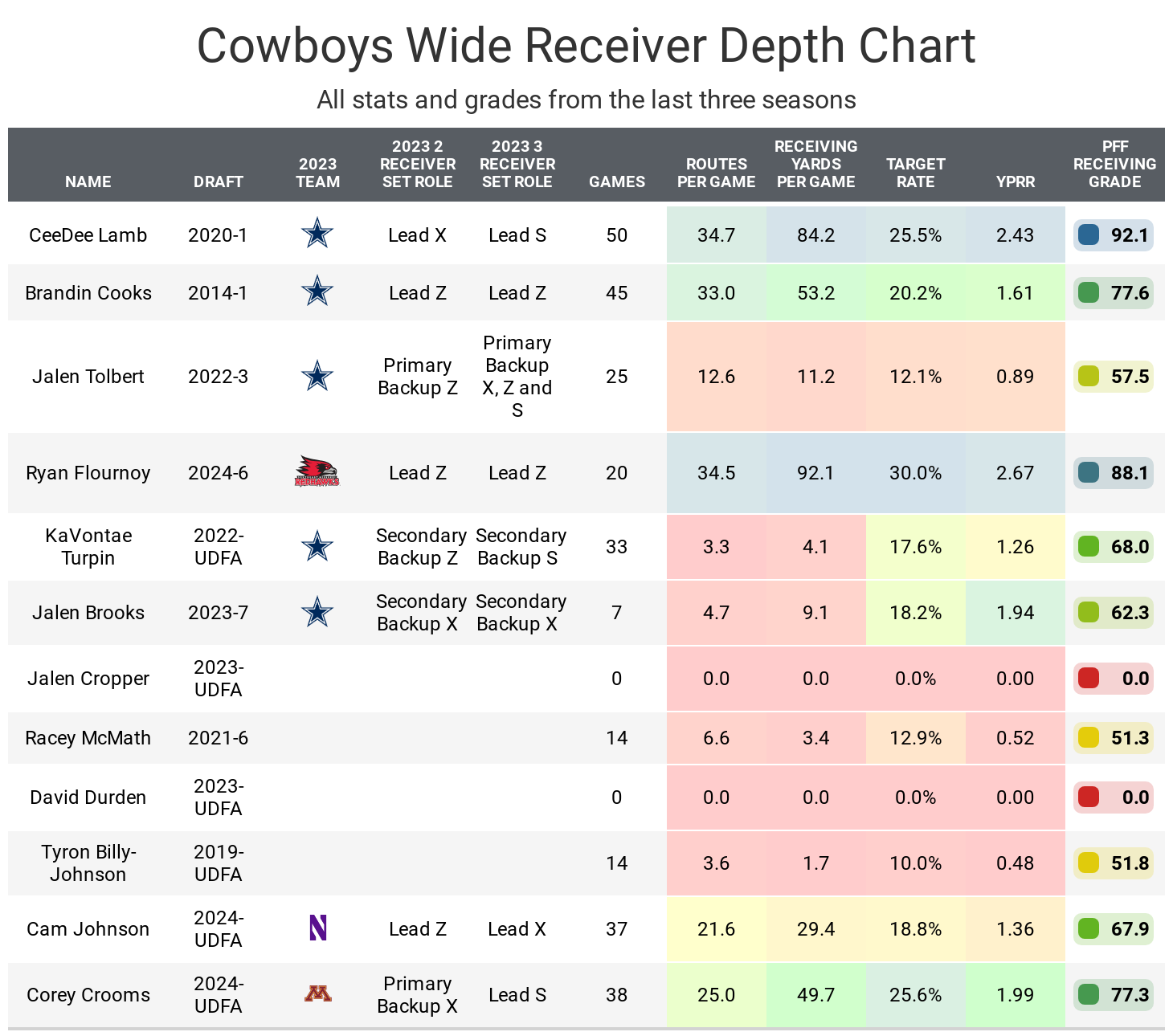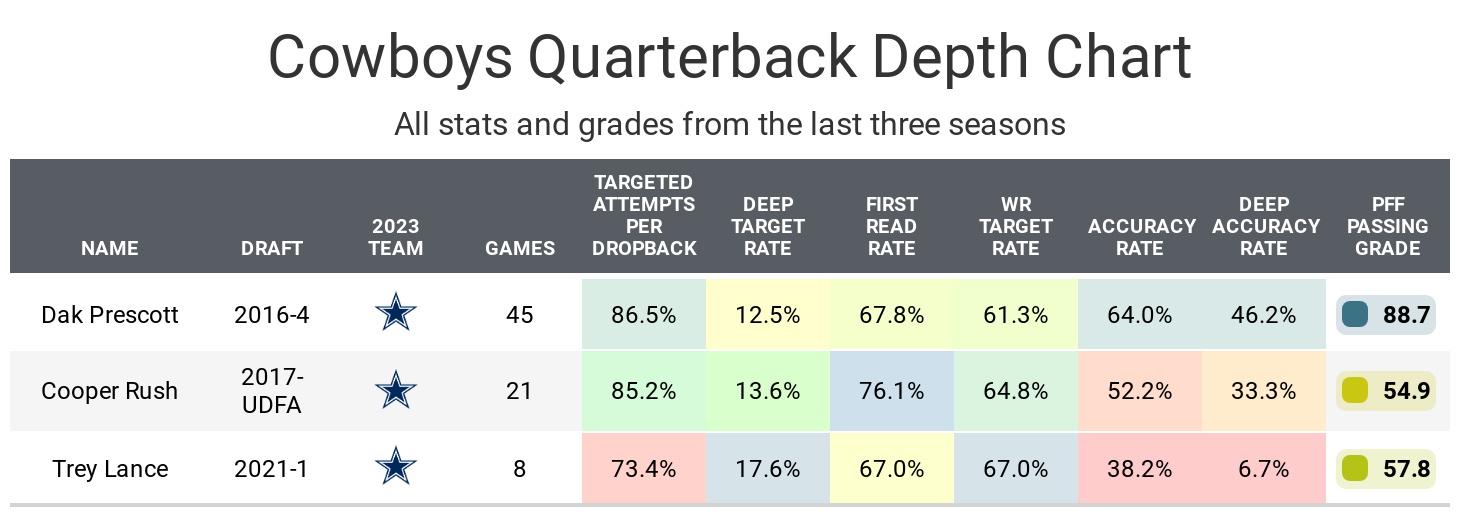• CeeDee Lamb is the favorite to repeat at WR1: He scored the most points last year and should be the first wide receiver off the board this year.
• Could he see more targets?: The Cowboys lost their fourth and fifth leading receivers in Michael Gallup and Jalen Tolbert, and didn’t invest much in their replacements.
• Get a head start on fantasy football: Use PFF's fantasy football mock draft simulator to create real live mock draft simulations to get ready for your live draft!
Estimated reading time: 4 minutes
The player profile series gives the most in-depth view of a player possible using the best data points at PFF’s disposal to look at how good the player has performed, what competition the player has for touches, and how other teammates and coaches will impact each player's performance.
Last updated: 7:15 a.m. Wednesday, July 10
Player performance
Lamb was a good wide receiver in his rookie season of 2020, and since then, he has improved every year in every conceivable way.
Over the last three seasons, he’s improved in all eight metrics in his receiving production chart each year outside of avoided tackles per game, where he was already excellent in 2021, took a slight step back in 2022 and then had a career-best in 2023. His receiving by situation is also excellent. The only routes where he’s not in the 85th percentile or better are the two routes he runs least often.
Lamb is only 25 years old, so he may continue to improve. We still have a few wide receivers ranked higher than Lamb, largely because they’ve been elite over a longer period of time, including Justin Jefferson and Ja’Marr Chase. If Lamb is able to keep improving, he could take the crown as the best wide receiver in the NFL.


Competition for touches
His role and lack of competition for touches is part of what separates Lamb from other wide receivers with a top-five ADP.
Over the last two seasons, he’s been the X receiver in two receiver sets and the primary slot receiver in three-receiver sets. As discussed in the wide receiver utilization study, that is a fairly unique role, but one that has produced the most fantasy points in PPR leagues.
Lamb had an elite 30.3% target share last season, which could be even higher this season. The Dallas Cowboys let go of Michael Gallup and replaced him with sixth-round rookie Ryan Flournoy. Outside of that, the wide receiver depth chart remains the same. Dallas also lost Tony Pollard in free agency, and he finished eighth among running backs with 55 receptions while bringing back Ezekiel Elliott, who will be 29 years old by the start of the season. These changes are likely negligible to Lamb’s target share, but if anything, it’s pointing to more targets and not less.
Having only Brandin Cooks and tight end Jake Ferguson to contend with sets Lamb apart from Ja’Marr Chase, who has Tee Higgins, Tyreek Hill, who has Jaylen Waddle. Amon-Ra St. Brown doesn’t have as much competition from wide receivers but had Sam LaPorta and Jahmyr Gibbs to contend with.


Impact of teammates
Lamb keeps Mike McCarthy and Dak Prescott as his head coach and quarterback as he’s had throughout his career. McCarthy took over as offensive playcaller last season, which led to a big shift in the team's passing rate over expected, the target rate to wide receivers and plays with three wide receivers on the field, all of which helped Lamb. The continuity at head coach and quarterback play separates Lamb from Justin Jefferson, who lost Kirk Cousins.


Bottom line
Lamb was WR1 in both total points and points per game last year. Anyone who puts up excellent numbers like Lamb will have to deal with regression, but his age, consistency at coach and quarterback, and lack of competition for targets can help combat the regression. The only reason he should be picked second overall instead of first is the gap between Christian McCaffrey and the rest of the running backs is wider than Lamb and the rest of the wide receivers.

Footnotes
- Statistics for the tables and charts were generally chosen based on their ability to predict future fantasy performance on either per game or per opportunity basis, or chosen for their ability to describe the player relative to other players at the same position.
- Opportunities for this purpose are defined by passing dropbacks, rushing attempts and receiving routes run.
- Numbers are either by season or based on the last three years. For rookies, only college numbers are included. For non-rookies, only NFL numbers are included, even if they played in college in the last three years.
- Because college competition is relatively easier than NFL competition, it can be expected that most rookies will see a decline in their numbers compared to their historic numbers.
- For all of the tables in this article, colors range from blue (good or high) to red (bad or low).
- All percentiles or colors compare the given player to other players with a high sample of opportunities. Generally, it’s one-third of the possible opportunities given the sample. If the player in question doesn’t have enough opportunities, they are still compared, even though a player could look good or bad on that small sample size which might not be as predictive.
- Information on running back utilization classifications and importance can be found here, wide receiver here and tight end here.




 © 2025 PFF - all rights reserved.
© 2025 PFF - all rights reserved.